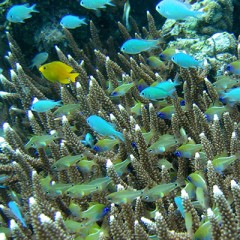Biodiversity
What is Biodiversity?

Emerging back in the late 1950s, the concept of ‘biodiversity’ gained momentum three decades later through the publication of Edward O. Wilson’s book entitled “Biodiversity” (1988). It was a work that called the world’s attention and awareness on rapid and imminent loss of various species across the world.
A History of Awareness
Emerging back in the late 1950s, the concept of ‘biodiversity’ gained momentum three decades later through the publication of Edward O. Wilson’s book entitled “Biodiversity” (1988). It was a work that called the world’s attention and awareness on rapid and imminent loss of various species across the world. The term further gained widespread acceptance upon the establishment of the Convention on Biological Diversity during the Earth Summit (formally the United Nations Conference on Environment and Development) held in Rio de Janeiro, Brazil in 1992.
To this day, biodiversity prevails as a key development issue, being part of the call for global environmental sustainability as defined by the UN’s Millennium Development Goals, which were established in 2000. The fact that biodiversity loss was first brought to public attention nearly three decades ago and yet still prevails as a global concern is truly disturbing.
Locally, despite the country’s inherently high degrees of ecological diversity and species endemism, biodiversity remains a relatively new concept in terms of both research literature and policy-making discussions. It is for this reason that FPE aims to aid in further promoting and expediting the spread of information and knowledge, as well as courses of action, on the subject.
|
Diversity in Definition, Unity in Meaning and Value
Biological diversity, in a nutshell, refers to the variety of all forms of life on earth or any particular location. Below are a few more prominent definitions and interpretations of the concept as shared and discussed over the years:
Aside from the scientific definitions, biodiversity can also have different meanings to different individuals or stakeholders. For instance, while the scientific community regards the term from biological, physical, and chemical viewpoints, the concept also involves equally important social, economic, and cultural aspects and impacts on the quality of life for human societies across the world. The study of and regard for biodiversity, therefore, has as much qualitative importance as quantitative.
Despite varying viewpoints on its meaning and merit, one thing is certain: biodiversity is invaluable and pursuit of its protection and conservation ought to be considered by society at large as a worthwhile endeavor. We explore and explain why below.
|
Levels of Biodiversity
Understanding biodiversity means dealing not only with the variety between species of organisms, but also with the variations found within certain populations or species, as well as the ecosystems within which they belong (see the CBD’s definition above). Biological diversity, therefore, is recognized at three levels, namely, of the genes, of the species, and of the ecosystem.
- Genetic diversity refers to the variabilities and distinctions defined by the genes of individual species of organisms. Human beings are a recognizable example of this, as illustrated by the genetic variations in human populations found in different parts of the world. Genetic diversity also occurs within the same populations, as seen in differences such as physiological features, among others.
- Species diversity refers to the quantity of species found in a particular location. Organisms are classified as belonging to the same species when they possess the physiological ability to interbreed and produce fertile offspring. A universal method of measurement of species diversity remains a matter of debate to this day. On a related note, species diversity is also measured through the lens of “taxonomic diversity,” which considers how a certain species relates to others species of a different taxonomic classification within their territory or habitat.
- Ecosystem diversity refers to the range of functioning ecological systems found within a geographic boundary. Diversity at this level due to the tricky nature of defining and measuring the boundaries of communities of species.
Because all of ecology is dynamic and interconnected by nature, it is important to remember that each of the above levels of biodiversity is equally important.
Reference
- Catibog-Sinha CS, Heaney LR. 2006. Philippine Biodiversity: Principles and Practice. Quezon City, Philippines: Haribon Foundation for the Conservation of Natural Resources, Inc.
Additional Resources and References for Researchers
General Information
- Encyclopedia of Life (EOL) - What is Biodiversity?
- Encyclopedia of Life (EOL) - Topics in Biodiversity
- World Wildlife Fund for Nature (WWF) - Biodiversity: The Majesty of Life
- United Nations Development Programme (UNDP) - Fast Facts: Biodiversity and Ecosystems
- World Health Organization (WHO) - On Biodiversity and Human Health
Working Papers
- World Wildlife Fund for Nature (WWF), Asian Development Bank (ADB), Global Footprint Network - Ecological Footprint and Investment in Natural Capital in Asia and the Pacific (2012)
- Organisation for Economic Co-operation and Development (OECD) - Towards Green Growth (2012)
- The World Bank (WB) - Biodiversity and Environmental Assessment Toolkit (2000)
Read More:
- Starting with the Basics: Ecology Defined
- Life All Around: The Distribution of Biodiversity
- The Lay of the Land: Ecosystem Diversity in the Philippines
- The Biogeographic Regions of the Philippines
- The Philippine Key Biodiversity Areas (KBAs)
- Hub of Life: Species Diversity in the Philippines
- Cause for Concern: The Alarming Rate of Biodiversity Loss
- Consequences and Impacts of Biodiversity Loss
- Why are We Losing Species?
- A Joint Effort: Campaigning to Conserve Biodiversity
- Challenges Facing the Campaign Against Biodiversity Loss

 DISPLAY CALENDAR
DISPLAY CALENDAR
 Read Policy Briefs
Read Policy Briefs
 View Our Partners
View Our Partners
 Access Grants MIS
Access Grants MIS
 Login to Webmail
Login to Webmail